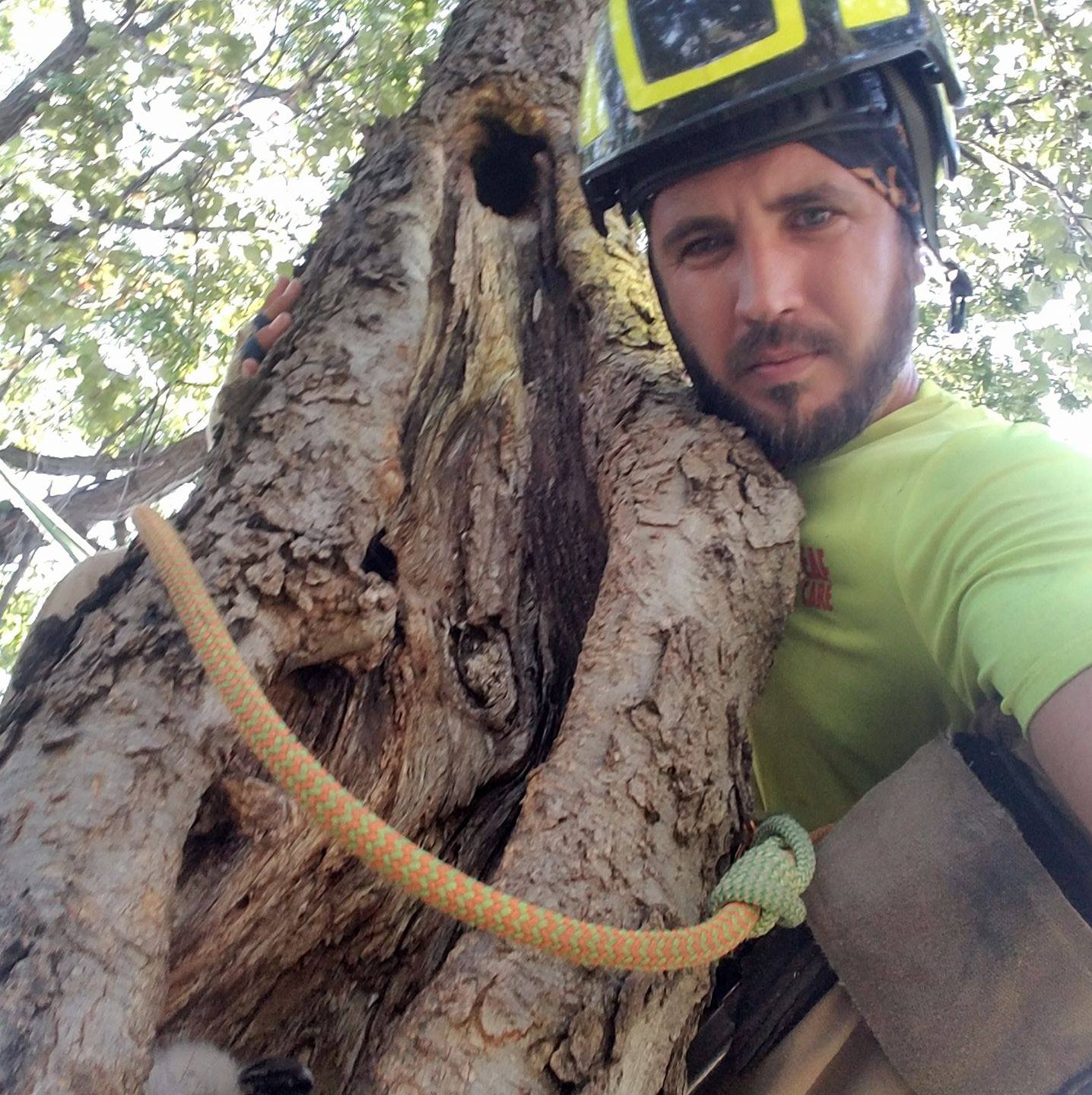Now that the Christmas season is over, it’s time to take down that mistletoe.
Despite its ties with the holiday season, mistletoe can have serious consequences for the health of your trees. So if you find this parasite on your property, you should remove it right away.
So, What is Mistletoe?
Mistletoe is an evergreen plant that grows on both trees and plants. We call mistletoe a “parasite” because it draws away water and vital nutrients from its host, just like a leech takes water and nutrients away from an animal in the form of blood.
How To Know if Your Tree Has Mistletoe
You can recognize a mistletoe infestation from the appearance of green shoots wrapped like a coil around the trunk and branches of your trees.
There are several varieties of mistletoe in the US (this US Department of Agriculture document can help you distinguish them), but they’re all fairly easy to spot. Besides growing on the branches of trees, they can be identified by their clusters of small white berries, which are poisonous to humans but a food source for many animals. Here in Texas, mistletoe grows on water oak, Spanish oak, elm, and hackberry trees, among others. If you have any of those on your property, keep an eye out.
Mistletoe Is a Tree Killer
Over time, mistletoe’s effects can be devastating: It causes branches to weaken and eventually die. Its roots burrow through bark, deep into the inner tissue, where they sap a tree’s strength, doing lots of damage if left unchecked. If mistletoe manages to spread far enough, it can even kill entire trees, if they’re subject to another stressor. That’s why it’s important that you remove mistletoe as soon as you can.
Mistletoe Should Be Removed Before it Harms your Tree
Mistletoe thrives on trees that are already stressed or weakened. While one or two of these parasites early in their life won’t do much harm to an otherwise healthy tree, if several of them are allowed to go unchecked, they can quickly kill branches.
Keep in mind that if you have mistletoe on a fruit tree, it won’t be able to produce the same quantity of fruit — certainly not on the infected branch.
Pruning is the Most Common and Effective Way to Control Mistletoe
Since mistletoe is a parasite, if you cut away the branch it’s on, it will die. However, mistletoe’s roots can extend a foot or so into the host tree’s branch. That means that when pruning, you should go at least a foot past the mistletoe plant. We suggest you cut back to the branch collar.
If you have just one or two plants on your property, and they’re in limbs that aren’t too high up, you could try taking care of them yourself. But if there are several mistletoe plants, you should have a certified arborist come out and prune them. Otherwise, the job is simply too difficult for you to complete on your own, and you’ll end up not fully removing the mistletoe, or hurting your tree more than you need to. Over-pruning is a real risk here — if you cut away more than 15 or 20 percent of a tree’s branches, you run the risk of harming it worse than the mistletoe will. That’s why removing mistletoe is sometimes a multi-year project.
Chemicals can be Used, But They’re Not a Great Idea
If you don’t wish to prune a branch — maybe you’re concerned it will negatively affect the look of the tree — you have the option of using a chemical spray, although at Arbor Leaf Tree Care we don’t recommend it. Ethephon sprays are most commonly used for this purpose.
As mentioned, we suggest you prune rather than spray chemicals. First of all, it takes a week or two for the chemical to take action, at which point the mistletoe’s shoots dry out and fall away. Chemicals will also not get to the roots of the mistletoe. Finally, any chemicals you use will hurt the host tree. Definitely don’t use chemical spray any on a tree unless it’s dormant.
Tree Removal is a Last Resort
If mistletoe has spread throughout a tree’s branches, then pruning may not be possible. In that situation you’ll want to have an arborist come to your property and have the tree removed. Otherwise, the mistletoe is likely to spread to other trees in your yard.
You’ll Probably Have to Remove Mistletoe More than Once
Even if you prune correctly, there’s a chance the mistletoe roots have spread further than you thought, allowing it to grow back.
Mistletoe also spreads easily — by wind, and by animals like birds and squirrels. If you’ve had it before, there’s a good chance it will grow on nearby trees in the future.

